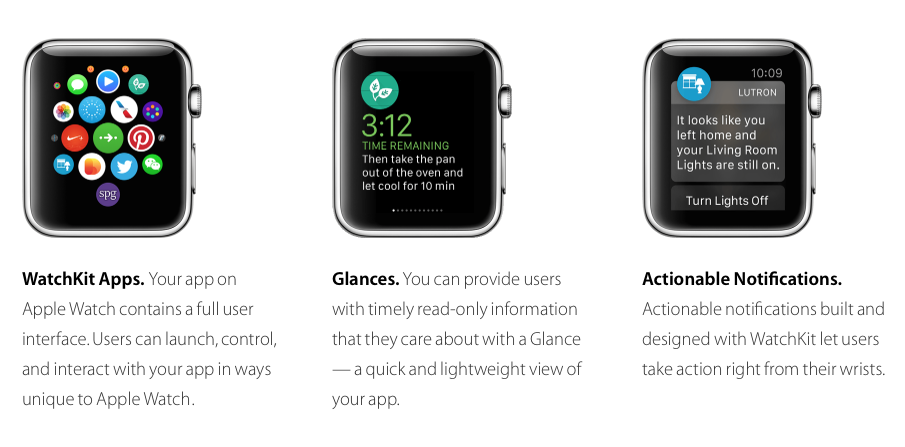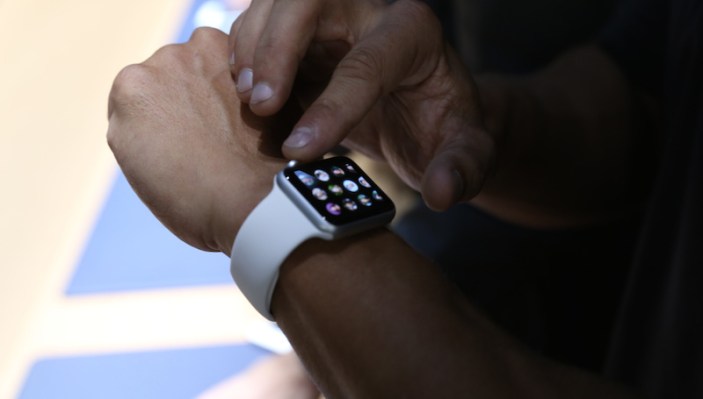Apple has launched WatchKit, the development platform for its debut smartwatch, which will be available to consumers sometime early next year. The Apple Watch at launch supports apps that include both a WatchKit extension on the iPhone connected to the device, and UI elements stored on the Watch itself. The iPhone runs the show, but the Apple Watch is sending output (like notifications) and receiving input (via taps or other actions) from the user.
Developers interested can grab the Xcode 6.2 beta, as well as the iOS 8.2 SDK that includes WatchKit, and it also requires the iOS 8.2 beta to develop the WatchKit extensions for use on your phone.

Apple has provided design guidelines and human interface guidelines for those building software for its wearable, too. These include suggestions and templates for different types of interfaces, tips on how to build the best home screen icons for the Apple Watch’s new unique bubble-based menu, size and layout style suggestions, as well as fonts and tips on text sizes. Apple’s smartwatch is an entirely new category, so the design language to be used on the apps built for it will differ considerably from what people are used to on their phones and tablets.
The primary components of WatchKit apps include a full UI for more advanced functions, as well as Glances, which offer just quick, easily consumed bits of relevant information about what’s going on with your software, as well as actionable notifications, which can be anything from offering quick replies to messages or controlling connected smartphone devices.
It’s interesting that the phone will bear the brunt of the processing demands, but it makes sense if Apple is keen on minimizing the battery drain requirements of the Apple Watch itself. We’ll need more information before we can determine what this means in terms of how much autonomy Apple Watch apps have, but the company has discussed how it will be able to use Apple Pay separate from a connected device, so presumably apps will be able to retain some offline functionality.
